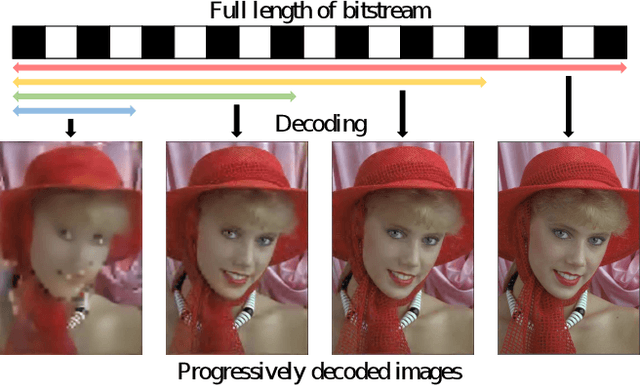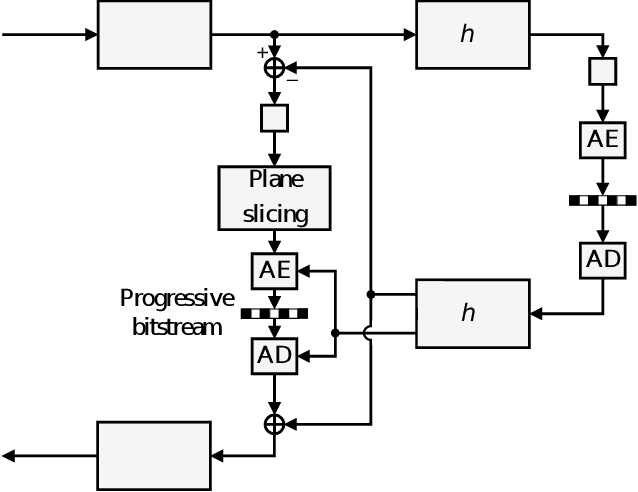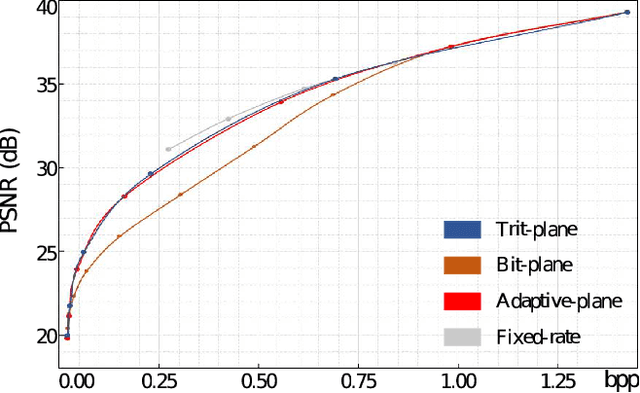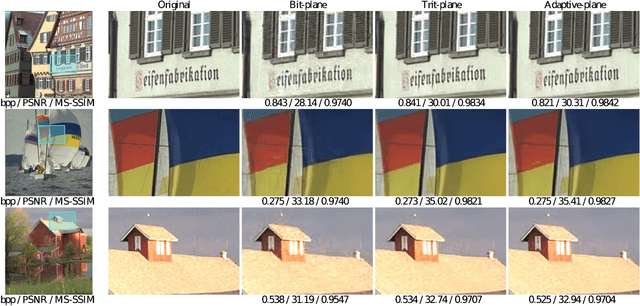RD-Optimized Trit-Plane Coding of Deep Compressed Image Latent Tensors
Paper and Code
Mar 25, 2022



DPICT is the first learning-based image codec supporting fine granular scalability. In this paper, we describe how to implement two key components of DPICT efficiently: trit-plane slicing and RD-prioritized transmission. In DPICT, we transform an image into a latent tensor, represent the tensor in ternary digits (trits), and encode the trits in the decreasing order of significance. For entropy encoding, we should compute the probability of each trit, which demands high time complexity in both the encoder and the decoder. To reduce the complexity, we develop a parallel computing scheme for the probabilities and describe it in detail with pseudo-codes. Moreover, in this paper, we compare the trit-plane slicing in DPICT with the alternative bit-plane slicing. Experimental results show that the time complexity is reduced significantly by the parallel computing and that the trit-plane slicing provides better rate-distortion performances than the bit-plane slicing.
 Add to Chrome
Add to Chrome Add to Firefox
Add to Firefox Add to Edge
Add to Edge